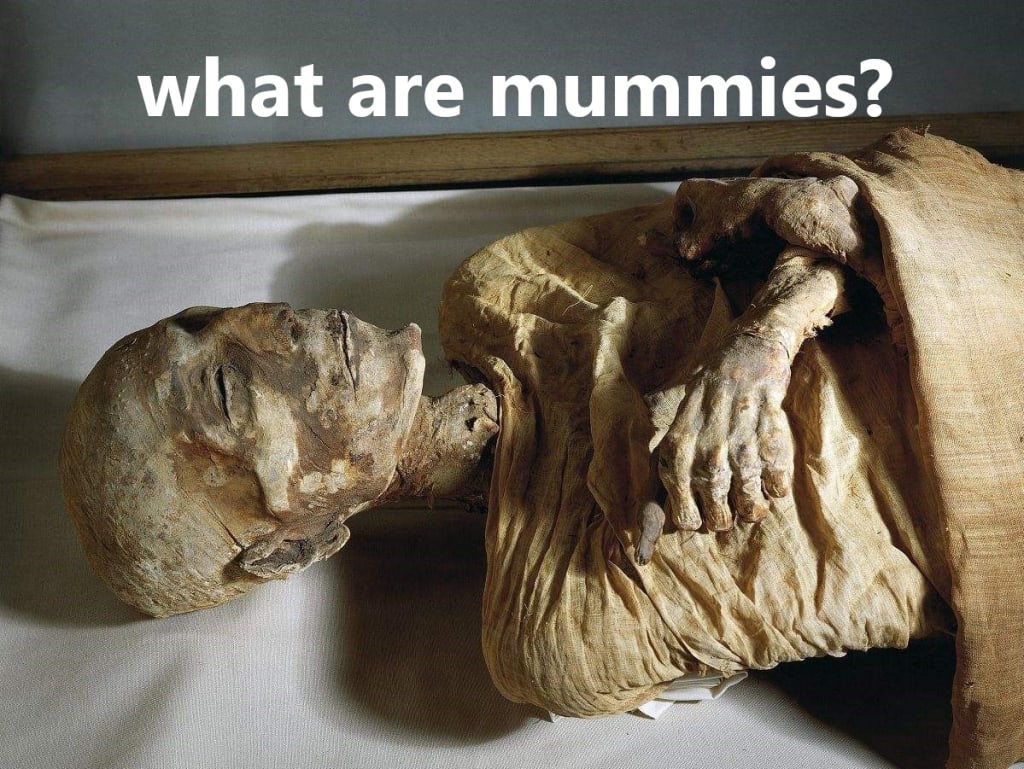
Mummification, an ancient Egyptian funerary practice that dates back over 3,000 years, was a carefully orchestrated process with deep religious and cultural significance. It aimed to preserve the body for the afterlife and facilitate the soul's journey to the realm of the dead. This complex procedure began with the extraction of internal organs, save for the heart, which was believed to be the repository of an individual's soul and identity.
The organs, including the brain, liver, stomach, and intestines, were carefully removed through a specialized embalming process. The brain, for example, was often extracted through the nostrils using a hooked tool. These organs were preserved in separate jars known as canopic jars, each protected by a deity and designated for a specific organ. The heart, in contrast, was left within the body because it was considered essential for the individual's judgment in the afterlife. This step was critical to preventing the body from putrefaction and ensuring its preservation.
Subsequently, the mummification process involved a crucial desiccation phase. The body was covered with natron, a natural mixture of sodium carbonate and sodium bicarbonate found in ancient Egypt. This salt-like substance played a pivotal role in absorbing moisture from the body, dehydrating it and reducing the risk of decomposition. The desiccation period typically lasted around 40 days. During this time, the body was meticulously monitored, and natron was replaced as needed to ensure that the drying process was thorough and successful.
Once the desiccation was complete, the body was meticulously treated for preservation and sanctification. Perfumed oils and aromatic plant resins were applied to the skin. This treatment not only served to impart a pleasant fragrance to the mummy but also contributed to the overall preservation of the body by creating a protective barrier against decay. The fragrant oils and resins also held deep symbolic significance, enhancing the deceased's connection to the divine and the journey to the afterlife.
Wrapping the mummy was a meticulous and sacred process. The body was first adorned with layers of linen strips. These strips were coated with thick layers of resin, ensuring that the wrappings adhered securely to the body. The intention was not only to preserve the form of the deceased but also to symbolize purification and protection. The layers of wrappings resembled a cocoon, representing the rebirth of the deceased in the afterlife. The process of wrapping was conducted with precision, and the final result was a beautifully encased mummy.
As a part of this process, mummies were often positioned on a wooden board, enhancing their stability. Additional wrappings were used to secure the body further, ensuring that the layers of linen remained in place. This meticulous attention to detail was a reflection of the deep cultural and religious significance of the mummification process. It was believed that the body, once preserved and sanctified in this manner, would serve as a vessel for the soul in the afterlife.
Unique to some mummies were the inclusion of elements of religious significance. Pouches containing amulets, charms, or religious artifacts might be placed with the mummy. These objects were intended to provide protection and guidance in the afterlife. In exceptional cases, mummified animals, such as Ibis birds, were positioned alongside the human remains. These animals held particular religious significance and were often associated with specific deities. It was believed that these offerings would enhance the deceased's chances of safe passage to the afterlife.
Securing the wrappings was of paramount importance to the mummification process. Long strips of linen were used to ensure the integrity of the layers of wrappings. A portrait panel, often depicting the individual's likeness, was placed over the mummy's face. This panel not only served to identify the deceased but also provided a point of recognition in the afterlife. In addition, a large linen cloth was used as the outer shroud, which was sometimes painted with imported lead-based pigment, giving it a distinct reddish hue. The use of such a red-shroud treatment was rare and symbolized a particular reverence for the deceased.
The religious and spiritual aspects of the mummification process extended to the outer wrappings of the mummy. Egyptian symbols, representing protection and rebirth, were frequently painted on the outer cloth. These symbols served to invoke the blessings of the gods and safeguard the deceased in the afterlife. They included depictions of deities, sacred animals, and various religious motifs, each holding unique significance in the context of the deceased's journey to the realm of the dead.
Finally, the name of the deceased, typically inscribed in the appropriate language, such as Greek or hieroglyphics, was carefully written at the feet of the mummy. This act served as a final recognition of the individual and was believed to aid the soul in its journey to the afterlife by ensuring that their identity was retained.
In conclusion, the mummification process in ancient Egypt was a profound and intricate practice, steeped in religious, cultural, and symbolic significance. It began with the removal of internal organs, followed by desiccation using natron, and culminated in the meticulous wrapping of the body. Perfumed oils, aromatic resins, and the inclusion of sacred elements further sanctified and preserved the deceased. The symbolism of the red-shroud treatment and the depiction of protective symbols on the wrappings enhanced the mummy's connection to the divine. This meticulous process was performed with great reverence, serving as a sacred ritual to ensure the body's preservation and guide the soul on its journey to the afterlife.





Comments
There are no comments for this story
Be the first to respond and start the conversation.